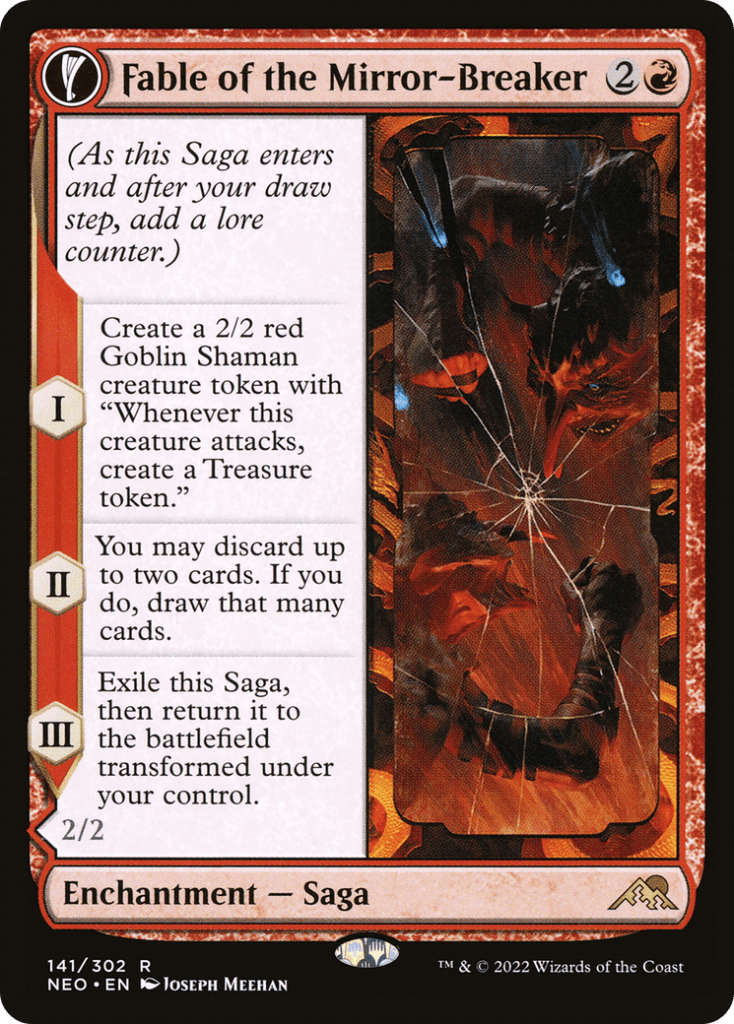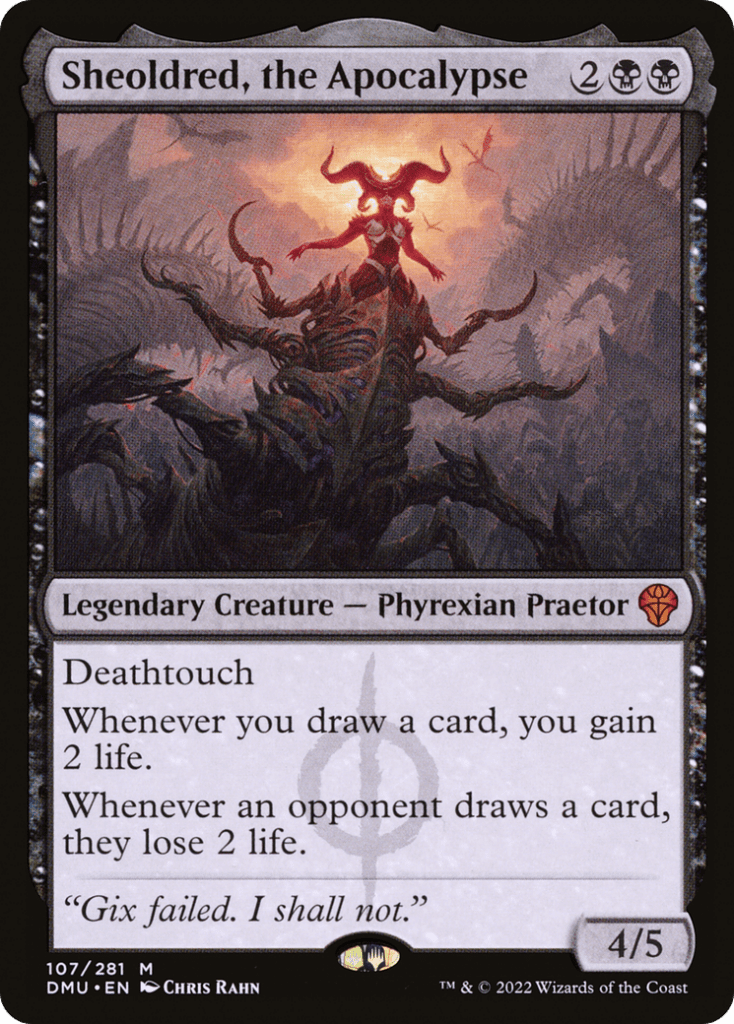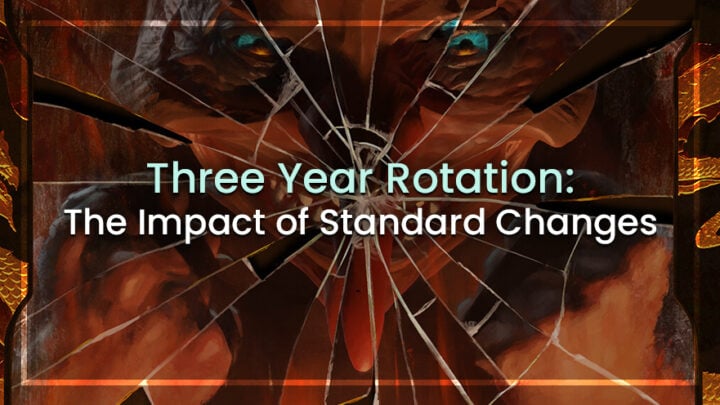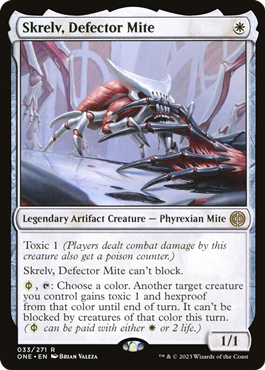While a great deal happened during Pro Tour March of the Machine last weekend, arguably the biggest news broke in the middle of the tournament. After years of the cards sticking around for a Standard rotation of two years, Wizards of the Coast announced plans to lengthen that period to three years.
In effect, this means rotation won’t happen at all this year when Wilds of Eldraine drops. As a result, the latest Innistrad sets, Streets of New Capenna and Kamigawa: Neon Dynasty will be sticking around for a bit longer. This means your current Standard deck just earned another 12 months of life, but there is far more to consider regarding how this change will affect the average player.
Deck diversity
At the most basic level, we’ll be looking at the upcoming preview season in a totally different light. Instead of having to rebuild with the scraps of what the previous season laid out, we’ll still have existing shells to work around. And whereas some decks are normally too stripped of parts to maintain their place in the metagame, the question just becomes whether they can keep up with all the new cards.
This potentially solves one of the biggest complaints about Standard, in that it always devolves to a Midrange grind-fest. When the entire card pool is only two years worth of sets, these decks can find ways to adapt to everything going on in the format. And given modern design gives lots of inherent value or utility to cards, Midrange only gets better and better at squeezing all the tools needed into a single shell.
Now, Wizards of the Coast can weave in support for different archetypes and open the format up more. With three years of cards to pull from, decks like Reanimator Flash Combo or tribal Aggro decks will have a much better chance of flourishing. And as a result, this will stretch Midrange decks too thin to be the obvious, strongest choice for competitive players.
The other benefit to this change is Wizards of the Coast isn’t as rushed when they really want a particular kind of deck to have a place in the format. Right now, a deck only has two years to come together, which can be too tight for more niche mechanics. And if they really want a deck to show up, it could lead to them making cards a bit stronger than they should be.
We could have seen this problem manifest a little bit with Toxic, which had a massive amount of cards that interacted with the mechanic shoved into Phyrexia: All Will Be One, both for flavor reasons and because other sets wouldn’t have much support. The deck is solid given how much of the set revolves around the mechanic, but imagine the cards had been pushed even harder.
In an effort to make the deck playable within the window of a single set release, Wizards could have designed a monster that disrupted the whole meta. But with this new rotation cadence, the pressure to make an archetype playable right out the gate is lessened. And with the design window for a set being two years, Wizards will also be able to adapt in real time to how Standard is progressing.
Price changes
While it’s impossible to predict the economic impact this change will have on the Standard, a lot of people are hopeful the format will be easier to buy into. After all, when you make a purchase now, your deck will last (on average) two years compared to the previous one year. In some situations, your deck might even last three years.
Let’s go back to the example of green/white Toxic from All Will Be One. If you bought that deck back when first printed, you probably won’t need to make many upgrades for the three years it will now remain in Standard.
While the deck might not be at the top of the metagame, it’s an easy option for players wanting to experience Magic — regardless of whether that’s on Arena or at their local game store. After all, Magic is expensive. And even if it is the most fun game in the world, it’s a huge ask for players to buy a new $300 deck every year.
Wizards may now have the room to make more decks like this in the future. And the more decks there are that players can pick up for a low cost and play for three years, the more accessible Standard becomes.
Solve one problem, create another


While we’ve touched on a lot of benefits so far, some players have been quick to point out how a three year rotation means overrepresented cards like Sheoldred and Fable of the Mirror-Breaker will stick around longer — a potential problem created by this new change.
These cards have been dominating Standard for the last year, and now they’ve been given a second lease on life. However, before anyone worries, Wizards of the Coast has shown the company will take action against cards that stifle a metagame.
While not explicitly said by Wizards, I expect there to be more rigorous bannings on cards like Fable or Sheoldred, which force decks into a more narrow range of colors. There’s no guarantee all the big cards will be banned — and some might not catch bans right away like this — but I think it is realistic to assume that if cards are going to last another year in the format, Wizards will take swifter action.
Patrick Sullivan tweeted about how it is easier to ban cards like Fable or Sheoldred, while maybe leaving cards of a similar power level to Reflector Mage (a victim of past standard bannings) in the format for a little longer as they will get out scaled. I agree with this take and I am very excited for the potential future of standard.
End step
If players do end up with a wider variety of cards that they can play for longer and acquire for less money, this seems like a monumental win for both the players and Wizards of the Coast. And the upside is we have seen Wizards’ willingness to backtrack if this turns out to be a huge disaster.
Back during Shadows over Innistrad, the company experimented with rotation being every 15 months. Players did not like this change and the system reverted back to the two-year cycle. However, even with that emergency lever in place, I am very optimistic that the three-year plan is much better direction for Standard as a whole.

Mason Clark is a grinder in every corner of the game who has played at the pro level and on the SCG Tour with Team Nova. Whether he’s competing in Standard, Historic or Modern, Mason plays with one goal in mind: to be a better player than he was the day before. Check out his podcast, Constructed Criticism, and catch his streams on Twitch.


